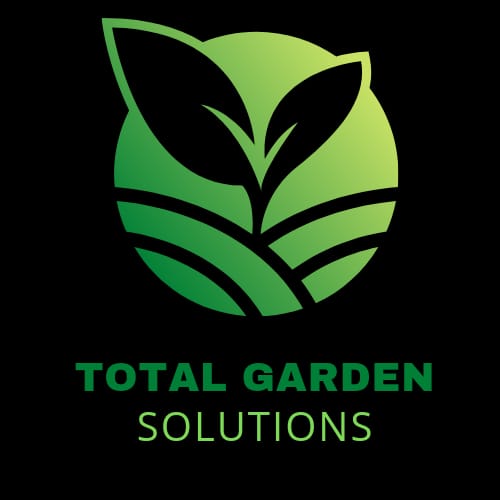
A beginners guide to Hydroponics
Share
The Basics of Growing Hydroponically: A Comprehensive Guide for Beginners
WHydroponics has taken the gardening world by storm, offering a soil-free, efficient, and innovative way to grow plants. Whether you’re looking to grow fresh herbs in your kitchen, cultivate exotic flowers, or produce large-scale crops, hydroponics can be the answer. If you’re new to this growing technique, this guide will break down the basics to get you started and optimize your success.
What is Hydroponics?
At its core, hydroponics is a method of growing plants without soil. Instead, plants are supported in a nutrient-rich water solution that delivers all the essential minerals they need to grow. By removing soil from the equation, hydroponics allows you to have greater control over the growing environment, leading to faster growth rates and higher yields.
Why Choose Hydroponics?
-
Faster Growth: Plants grown hydroponically can mature up to 50% faster than those grown in soil, thanks to the direct delivery of nutrients.
-
Higher Yields: With optimal conditions, hydroponics often produces more food per square foot compared to traditional gardening.
-
Water Efficiency: Hydroponics uses up to 90% less water than soil-based gardening, making it an eco-friendly option.
-
Space-Saving: Ideal for urban dwellers, hydroponic systems can be vertical or compact.
-
No Weeds or Soil-Borne Pests: Eliminating soil also eliminates many common gardening headaches.
Essential Components of a Hydroponic System
Before diving into hydroponic gardening, you’ll need to understand the key components that make up a system:
-
Growing Medium: While soil isn’t used, plants still need support. Popular alternatives include coco coir, clay pellets, perlite, and Rockwool.
-
Water Reservoir: Holds the nutrient solution and provides water to the plants.
-
Nutrient Solution: A mix of water and essential nutrients like nitrogen, phosphorus, potassium, calcium, and magnesium.
-
Air Pump and Air Stones: Ensure the water is oxygenated, which is crucial for root health.
-
Light Source: LED grow lights or natural sunlight are necessary for photosynthesis.
-
pH Control Kit: Maintaining the right pH (usually 5.5–6.5) ensures nutrient uptake.
Types of Hydroponic Systems
There are several types of hydroponic systems to choose from, each with its pros and cons. Here are the most popular:
-
Deep Water Culture (DWC):
-
Plants are suspended above a nutrient solution with their roots submerged in water.
-
Easy to set up and ideal for beginners.
-
-
Nutrient Film Technique (NFT):
-
A thin stream of nutrient solution flows over the roots in a sloped channel.
-
Efficient and great for leafy greens and herbs.
-
-
Ebb and Flow (Flood and Drain):
-
The nutrient solution floods the grow tray periodically, then drains back into the reservoir.
-
Works well with various plant types.
-
-
Drip System:
-
Nutrients are delivered directly to each plant through a drip emitter.
-
Highly customizable and versatile.
-
-
Aeroponics:
-
Roots hang in the air and are misted with nutrient solution.
-
Offers rapid growth but requires more maintenance.
-
-
Wicking System:
-
Nutrients are drawn up to the roots via a wicking material.
-
Low-tech and low-cost, but not suitable for large plants.
-
Step-by-Step Guide to Starting Your Hydroponic Garden
-
Choose Your System:
-
Decide which type of hydroponic system best suits your space, budget, and plant preferences.
-
-
Pick Your Plants:
-
Beginners often start with herbs (basil, mint, parsley) or leafy greens (lettuce, spinach). These grow quickly and are forgiving of minor mistakes.
-
-
Set Up Your Space:
-
Ensure adequate light, temperature control, and ventilation. Ideal temperatures are between 65°F and 75°F (18°C to 24°C).
-
-
Prepare Your Nutrient Solution:
-
Mix nutrients according to the manufacturer’s instructions and adjust the pH.
-
-
Add Plants:
-
Place seedlings or clones into your chosen growing medium and ensure roots are exposed to the nutrient solution.
-
-
Monitor and Maintain:
-
Regularly check water levels, nutrient concentration, pH, and the health of your plants.
-
Tips for Success
-
Start Small: Begin with a simple system and a few plants before scaling up.
-
Track Progress: Keep a journal of pH levels, nutrient changes, and plant growth.
-
Clean Regularly: Prevent algae and bacteria buildup by cleaning your system every few weeks.
-
Invest in Quality: High-quality nutrients, grow lights, and equipment pay off in better results.
-
Stay Patient: Learning curves are normal. Mistakes are part of the process.
Common Challenges and How to Overcome Them
-
Nutrient Imbalances:
-
Symptoms: Yellowing leaves, stunted growth.
-
Solution: Test your nutrient solution regularly and adjust as needed.
-
-
pH Fluctuations:
-
Symptoms: Poor nutrient absorption.
-
Solution: Check pH daily and use pH up/down solutions for corrections.
-
-
Root Rot:
-
Symptoms: Brown, slimy roots.
-
Solution: Ensure proper oxygenation and avoid overwatering.
-
-
Pests and Diseases:
-
Symptoms: Visible pests or wilting plants.
-
Solution: Use organic pest control methods and maintain cleanliness.
-
Why Hydroponics is the Future of Gardening
With global challenges like climate change, water scarcity, and the need for sustainable food production, hydroponics is more relevant than ever. This method allows gardeners and farmers to grow food efficiently, conserve resources, and adapt to urban environments. Whether you’re an enthusiast or a commercial grower, hydroponics offers a pathway to a greener, healthier future.
Final Thoughts
Growing hydroponically is an exciting journey that combines science and creativity. By understanding the basics and investing in the right tools and techniques, anyone can enjoy the benefits of hydroponic gardening. Ready to get started? Visit our hydroponics shop today to find everything you need, from beginner kits to advanced systems. Let’s grow together!
